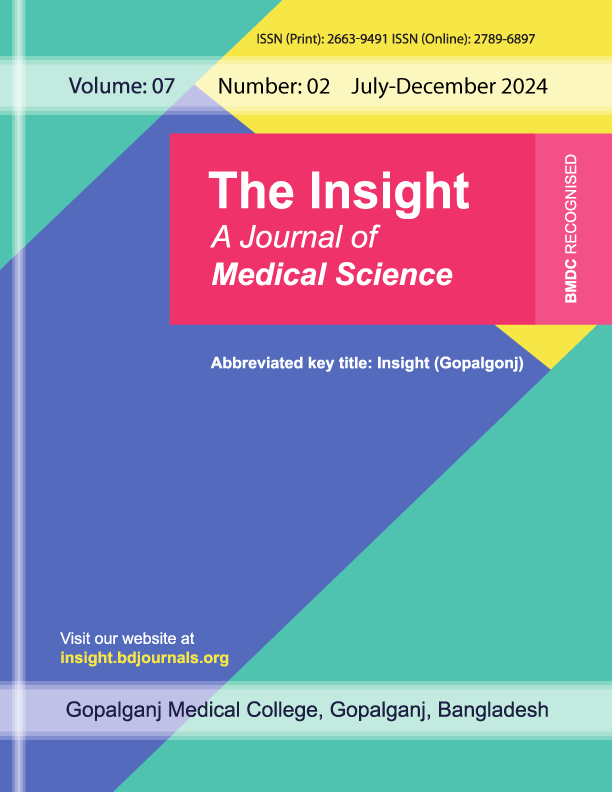Comparison of Surgical Outcomes between Anterior and Posterior Approaches in Cervical Spondylotic Myelopathy - Experience from a Tertiary Care Hospital of Bangladesh
Published 15-07-2025
Keywords
- Cervical Spondylotic Myelopathy,
- Surgical Outcomes,
- Discectomy,
- Laminectomy
Copyright (c) 2025 The Insight

This work is licensed under a Creative Commons Attribution 4.0 International License.
How to Cite
Abstract
Introduction: Cervical spondylotic myelopathy (CSM) is a leading cause of spinal cord dysfunction in older adults. Surgery is the main treatment, with anterior or posterior approaches chosen based on the compression site, alignment, and number of levels involved. Optimal approach selection is key to better outcomes. The present study aims to compare the surgical outcomes between anterior and posterior approaches in patients with cervical spondylotic myelopathy. Methods and materials: This comparative observational study took place from January 2022 to June 2023, and was conducted in the National Institute of Traumatology & Orthopaedic Rehabilitation (NITOR) and the Orthopaedics Department of Sylhet M.A.G. Osmani Medical College Hospital, Sylhet, Bangladesh, including 100 patients with MRI-confirmed cervical spondylotic myelopathy. Patients were divided into two groups: Group A underwent anterior decompression, and Group B underwent posterior decompression. Statistical analysis was performed using SPSS version 25.0, and a p-value <0.05 was considered statistically significant. Result: Both surgical groups show significant improvement in functional and neurological outcomes. The anterior group has shorter operative time (108.4 vs. 132.1 mins), less blood loss (124.2 vs. 198.5 ml), and shorter hospital stay (4.2 vs. 5.6 days). NDI scores and Nurick grades improve similarly in both groups, with ≥2 grade improvement in 76% of anterior and 70% of posterior cases. Dysphagia is more common in the anterior group (12%), while C5 palsy and axial pain are more frequent in the posterior group. Conclusion: Both anterior and posterior approaches effectively improve outcomes in cervical spondylotic myelopathy. The anterior approach offers shorter operative time and hospital stay, while the posterior is preferred for multilevel disease. Overall, outcomes remain comparable, supporting tailored surgical selection based on pathology.



